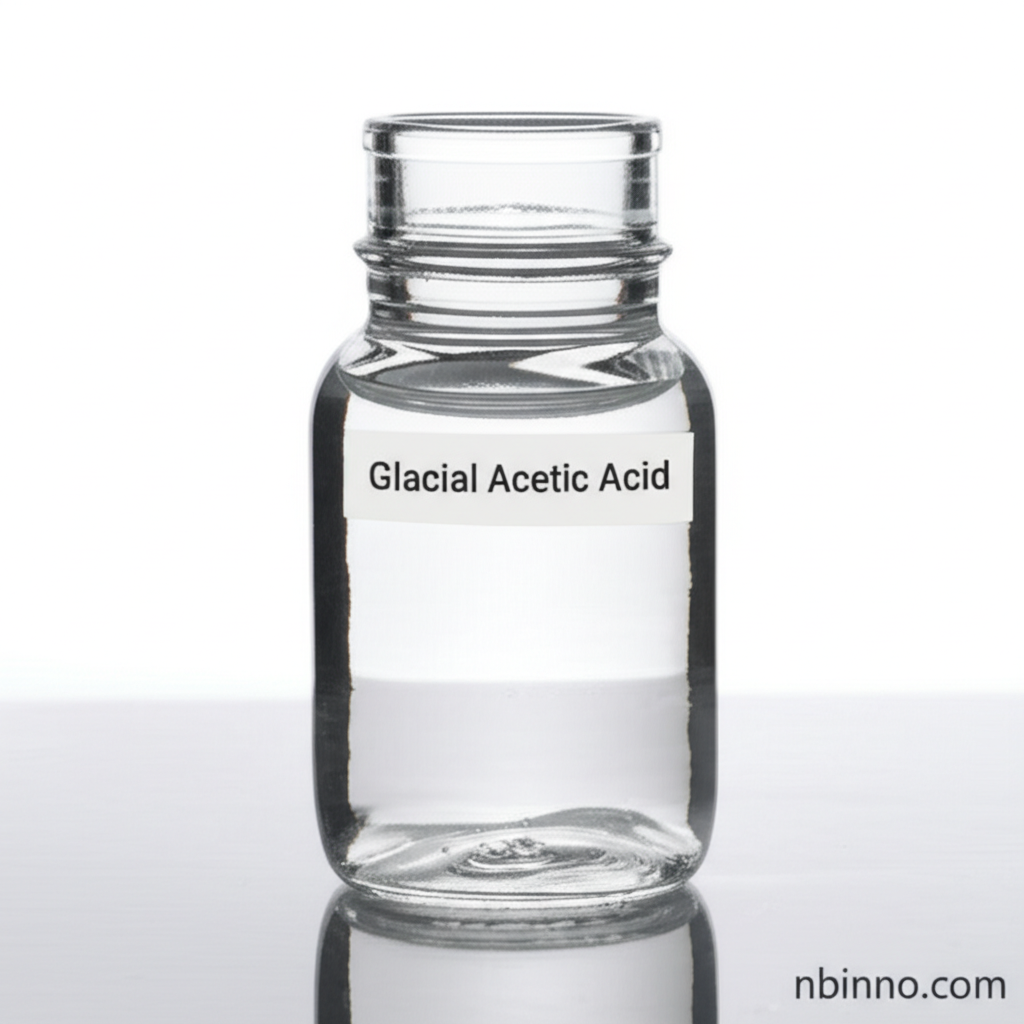Glacial Acetic Acid 99.8%: A Comprehensive Guide to Industrial and Chemical Applications
Discover the versatile uses and properties of high-purity Glacial Acetic Acid in various industries.
Get a Quote & SampleProduct Core Value

Glacial Acetic Acid
Glacial Acetic Acid, a highly concentrated form of acetic acid, serves as a cornerstone chemical with remarkable purity and reactivity. Its applications span chemical synthesis, pharmaceuticals, textiles, and food processing, making it an indispensable component in numerous industrial processes.
- Explore the key uses of glacial acetic acid in chemical synthesis, including its role as a precursor for acetate esters and vinyl acetate monomers, vital for adhesives and textiles.
- Understand the critical role of acetic acid in pharmaceutical applications, serving as a solvent or reagent in the production of active pharmaceutical ingredients (APIs).
- Learn how acetic acid properties are leveraged in the textile industry for manufacturing synthetic fibers and in dyeing processes.
- Discover the benefits of using acetic acid for water treatment, where it acts as a pH adjuster and corrosion inhibitor.
Key Advantages
High Purity and Reactivity
The high purity and reactivity of glacial acetic acid contribute to better yields and fewer side products in chemical synthesis, offering superior control in reactions.
Versatile Applications
From industrial manufacturing to laboratory research, this organic acid finds use as an effective solvent, acidity regulator, and a key component in producing a wide array of products.
Cost-Effectiveness
Its efficiency and minimal need for pre-concentration can lead to reduced energy consumption, time savings, and lower overall process costs.
Key Applications
Chemical Manufacturing
Glacial acetic acid is a crucial intermediate in producing chemicals like vinyl acetate monomer, cellulose acetate, and polyvinyl acetate, essential for adhesives, paints, and textiles.
Pharmaceutical Synthesis
It serves as a vital solvent and catalyst in the synthesis of active pharmaceutical ingredients (APIs), contributing to the development of essential medicines.
Textile and Fiber Production
Used in the production of synthetic fibers such as cellulose acetate and in textile dyeing and finishing processes, enhancing fabric properties.
Food and Beverage
As a food additive, it functions as an acidifier and preservative, contributing to the flavor and shelf-life of various food products like vinegar and pickles.
